
ALBERTO SORDI |

~ Rome and the Movies ~
| THE GALLERIA ALBERTO SORDI |
|

page 6 |
December 4, 2003 is another day that Rome remembers in connection with Alberto Sordi's memories: on this date the famous Galleria Colonna was opened again, spic and span after having been closed for many years.
The Galleria Colonna, not to be confused with the painting gallery by Palazzo Colonna, which has the same name, is a public arcade located along via del Corso, Rome's high street, in Colonna district.
Stardust / Polvere di Stelle (1973), one of Sordi's most celebrated movies, which tells the story of a shabby vaudeville company, begins and ends in this place. Below left is an excerpt from the movie, featuring the main character and his wife as they walk through the Galleria Colonna, at the time of WW II.
| During the 1980s and the 1990s, though, the arcade was closed, as it had disgracefully fallen into a state of abandonment: all of its fashionable shops and bars had gradually closed down, and the Galleria Colonna itself had fallen into a pityful state. |
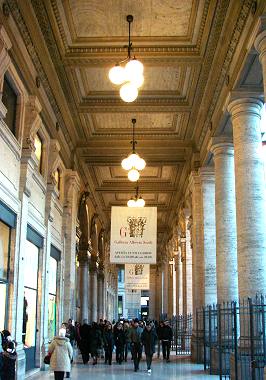 |
Homeless stragglers and drug addicts began to spend the night in this place, so that in the end, the decision of closing the arcade had to be inevitably taken, also for hygienic and security reasons.
It took several years before Rome's administrators were able to find the right sponsor, to finish the neverending restoration works, and to open again the arcade. This took such a long time that two generations of Roman natives could finally step into the Galleria Colonna for the first time in their life. But the result was worth the wait.
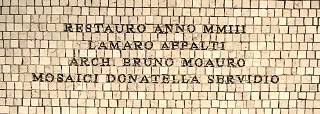
|
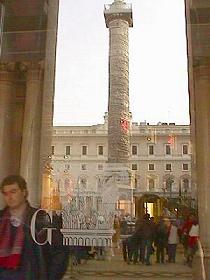
the column of Marcus Aurelius reflects
on the glass doors of the gallery |
|
The arcade is housed in a large 1922 building that closes on one side piazza Colonna, the square where the column of emperor Marcus Aurelius stands.
In place of this building, once stood Palazzo Giustini-Spada, one of the many mansions drawn by the famous architect Giacomo Della Porta, built in the late 1500s; its sober front is featured in some old pictures of the famous Roman monument, such as the one shown below.
After having belonged to different noble families, in the early 19th century the building became a property of the Boncompagni-Ludovisi family, and was renamed palace of the Prince of Piombino. |
|
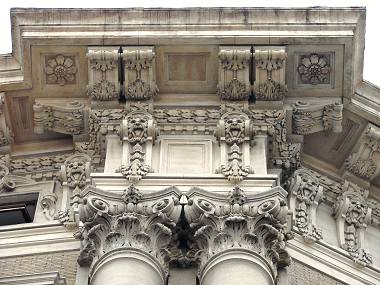 |
|
|
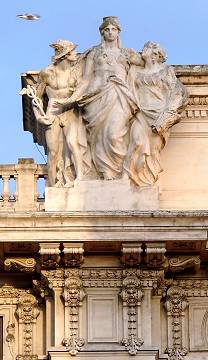 |
|
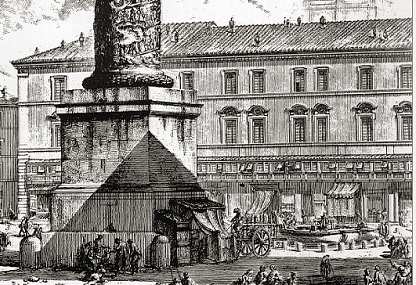 |
In the late 1800s, the mansion was expropriated by the City Council, and in 1889 it was taken down. The ground was initially used for holding events during Rome's Carnival (see also Curious and Unsual, page 16); then a pavillion for hosting temporary exhibitions was built.
This was followed by the making of the present building, whose project was signed by architect Dario Carbone, which lasted from 1914 to 1922. According to one of the early purposes, it should have been used as Rome's central train station, but this awkward idea was then dropped.
← detail of an etching by Giovanni Battista Piranesi
(late 18th century); the building in the background,
behind the column of Marcus Aurelius, is Palazzo Giustini-Spada
|
|
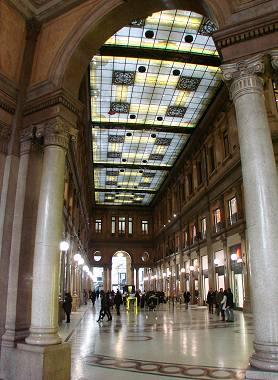 |
Since the time the Galleria Colonna was built, it has always been one of the city's most fashionable meeting points.
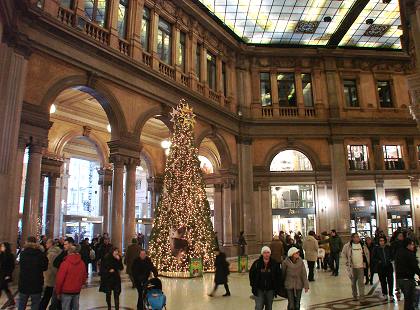 |
During the first half of the 20th century, it was a custom for obscure actors to hang around here, showing off themselves, in the hope of being noticed by rich producers, who sat at the tables of the arcade's elegant cafes.
|
|
From the arcade's ceiling still hang the original stained glass window panels (right), which represent one of the very few examples of Art Nouveau style in Rome.
The old paving, instead, has been completely replaced and is presently decorated with a mosaic-like pattern, which includes the arcade's own logo (below right), i.e. a Corynthian capital and a letter G. |
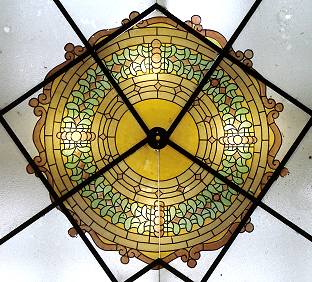 |
The arcade's main entrance is located below a tall porch, adjoining piazza Colonna. |
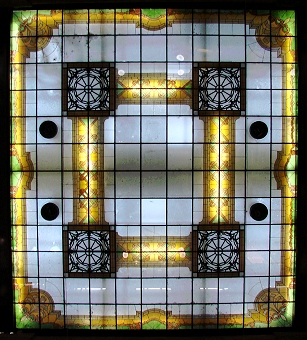 |
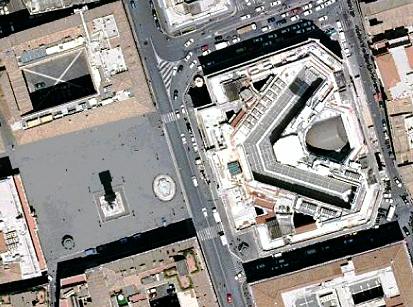 |
Inside, two symmetrical wings in the shape of a V lead to the opposite corners at the back of the building, along via di Santa Maria in Via.
| One of the rear doors faces the church of Santa Maria in Via (see also The Rioni section, Trevi district), while the other is located by the crossing with via dei Sabini. |
|
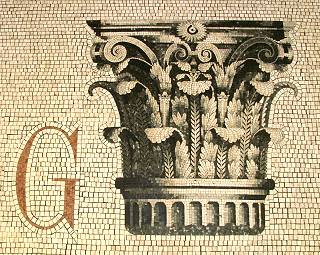 |
|
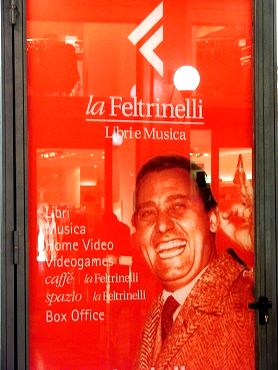 |
In 2003 the arcade was not only refurbished, but also renamed after Rome's great actor. On the first Sunday following its reopening to the public, i.e. on December 7th, during a touching ceremony held by Rome's mayor (by that time, Walter Veltroni), with the participation of Aurelia Sordi, Alberto's only surviving sister, the now former Galleria Colonna was officially renamed Galleria Alberto Sordi.
| Thanks to this initiative, less than one year after having passed away, the famous actor entered the list of personalities remembered by Rome's street names, on one of the busiest and most popular spots of his city. |
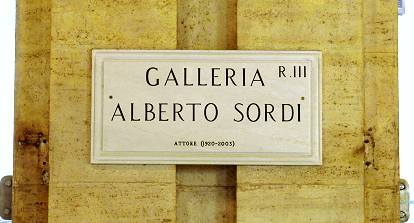 |
|